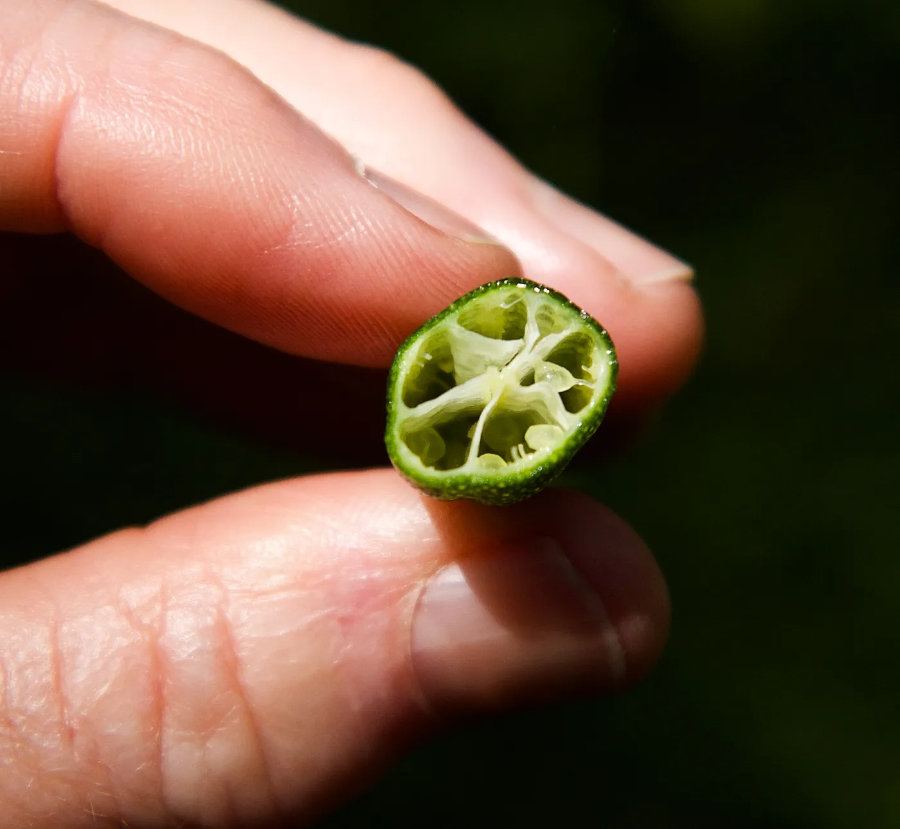Finger lime
Story and photos by Russ Grayson
Finger lime is a tasty and citrusy small tree for the home and community garden as well as for the commercial orchard.
Common name: Finger lime
Botanic name: Citrus australasica (previously Microcitrus australasica)
Family: Rutaceae
Growth form:
- medium to large shrub or small tree of four to five metres in height and three to four metres spread
- green fruit 30–120mm long filled with tiny pink or cream beads of juice
- white flowers 10 to 14mm diameter
- perennial
- small, thick leaves
- spines along branches.
Centre of diversity: Australia.
Natural habitat: subtropical lowland rainforest understorey of SE Queensland and Northern NSW growing in a variety of soils.
Useful part: the green-yellow fruit.
Uses:
- food, edible raw — fresh, juicy vesicles give the sensation of a burst of tangy flavour when chewed
- make into garnish, jams
- grown commercially following emergence of gourmet bushfood market.
Ethnobotanical uses:
- used by Aboriginal people
- named ‘Gulalung’ in the Bundjalung language of Northern NSW, its centre of diversity.
Reproduction:
- from seed or cutting
- seedlings are reported to take a minimum of five years to reach maturity
- commercially available grafted onto citrus rootstock and cross-bred with other citrus species
- hybrid cultivars produce fruit in a variety of colors
- does not appear to attract fruit fly
- may require pest management measures in cultivation.
Cultivation:
- grows from tropical to temperate climates
- prefer soil around pH6
- slow growing
- grows in full sun or dappled shade
- well-drained soils
- reported to tolerate light frost but young plants require frost protection
- susceptible to the usual range of citrus pests and diseases including citrus gall wasp (Bruchophagus fellis) that can reduce yield and vigour.
Uses in landscaping:
- growth form makes finger lime suitable for planting in home gardens and in smaller community gardens
- plant as a food source
- plant as a component of mixed orchard
- understory to taller trees in multi-level orchard or food forest
- plant as component of Australian bushfood botanical collection
- in cooler climates, plant on northward-facing (sunward) site.
Notes: The finger limes in the photo are growing near Bellingen in subtropical northern NSW.
PHOTO: Russ Grayson (www.pacific-edge.info).


